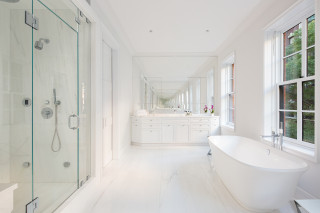Posted by Leonard Steinberg on March 9th, 2014
As the cries for AFFORDABLE HOUSING grow in a city where labor, land and material costs keep escalating, it is probable that the only real solution for affordable housing is RENTAL housing. The percentage of new homes being built as rental apartments is at the highest level in 40 years, as an improving jobs picture pushes younger Americans to form their own households, but tighter lending standards and higher pricing make it more difficult to buy, especially in New York.
In the past, construction and housing growth was driven by single-family homes and condominium construction. In 2013 construction was started on a little less than one million new residential units, and about one in three of those was a rental in a multifamily building, the highest share since the mid-70s. Single-family homes accounted for about two-thirds of housing starts last year, down from their peak of 87% in 1993 and about 80% in the years leading up to the recession.
Mortgage credit is still tight and risky borrowers are being shunned (thankfully!). Scraping together that 20% downpayment is increasingly difficult. Most Americans have seen muted wage gains, and others have high student-debt loads, forcing people who otherwise would have bought homes to rent instead. As the job market improves, larger numbers of young adults are leaving their parents’ homes and forming their own households—adding more to the demand for rentals. And the supply of new apartments hasn’t kept pace, especially in some key markets such as New York and San Francisco. Many new rental buildings are under construction in New York, although their ‘affordability’ is questionable: is paying $ 3,000/month for a studio really that affordable? The lottery system for allotting affordable rentals to a lucky few while everyone else has to pay very high rents certainly does not qualify as FAIR. The rent control and regulation system in New York further fuels the need for a majority to pay lots more at the expense of those lucky few who benefit by a system that is mostly unfair.
The first time home buyer is becoming the most difficult demographic to cater to. Shorter-term growth in rental demand is combining with long-run demographic trends that are expected to continue to tilt U.S. home construction toward “multifamily” units, a category that includes everything from garden-style apartments to towering condominiums. The baby-boom generation is moving into retirement and empty-nesthood, prompting many to downsize to smaller quarters. The generations behind them, meantime, are having fewer children, later in life, so need less space.
Multifamily units are projected to increase to an annual rate of 550,000 new units a year, or roughly twice the rate of today. Household formation is the single most important growth factor for housing. And renting feels safer to many who are burdened with debt, fearful of keeping a job, or anxious to keep up with the Kartrashians, spending on more ‘visibly gratifying’ consumer items such as televisions, clothing, cars and jewelry.
I know of young people who sacrificed a great deal to buy their first apartment to avoid renting. Paying $ 3,000/month in rent equates to over $1 million over a 30 year period without interest or rental escalations. How sad that all these people forced into renting may never know the joys of owning a home, and the financial rewards home ownership delivers over many years. Granted, home ownership is not all a bed of roses, but I have yet to meet someone in their 60’s who isn’t better off for having bought their home than the person who rented all these years, lived in a lesser quality property, and failed to build substantive equity over time.
Maybe its time for a government sponsored rent-to-own program? Will these rental buildings ultimately be converted to condominiums? And do people get affordable housing for life, thereby dis-incentivizing them from ever paying market rates? Do those who receive the affordable housing have certain benchmarks that once reached take this ‘taxpayer gift’ away to give to those more deserving?
Will affordable housing in the form of rental apartments only further escalate the divide between poor renters and a few, even richer landlords?
